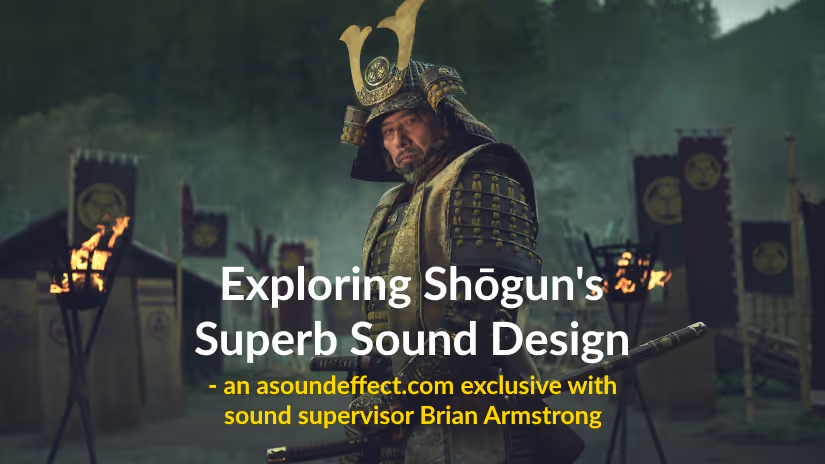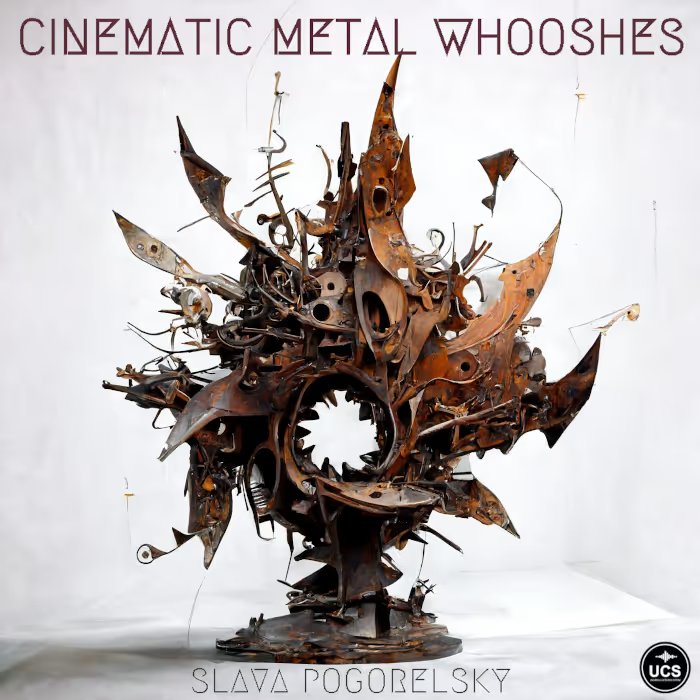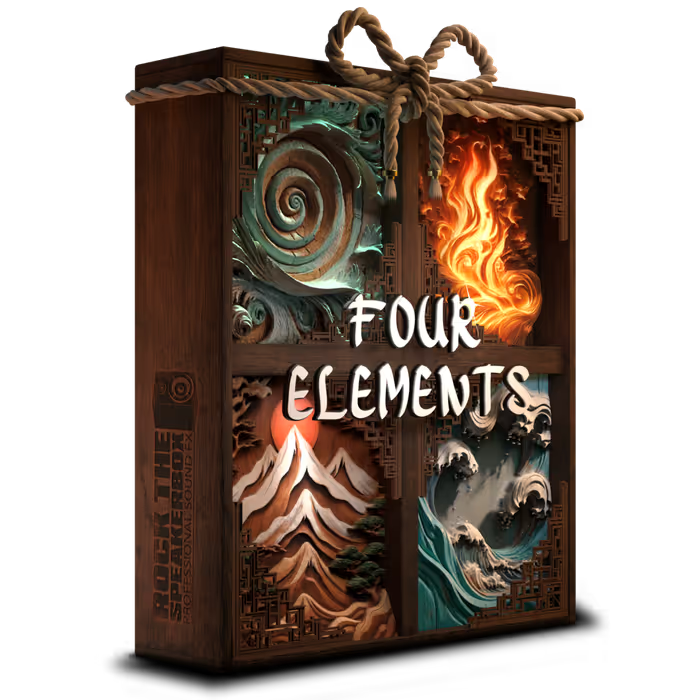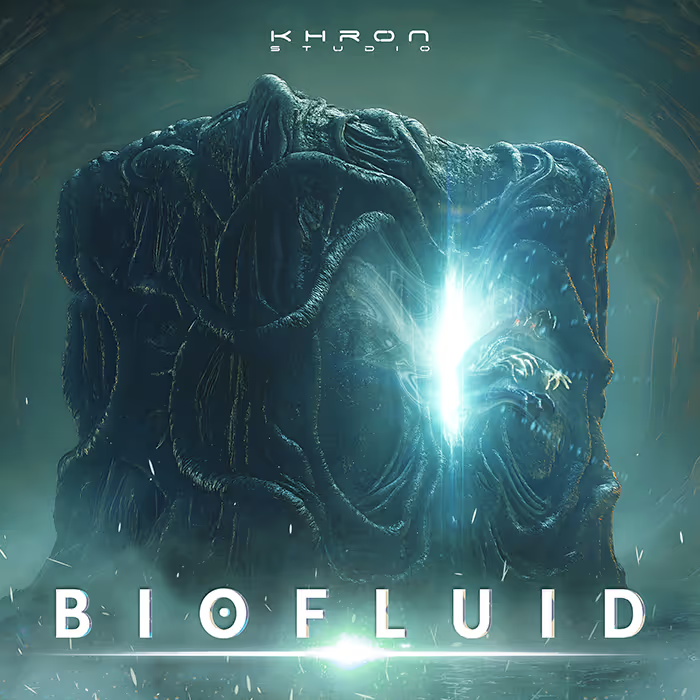FX’s hit miniseries Shōgun has just three episodes left! The story, based on the book by James Clavell, tells the tale of a Westerner (English sailor John Blackthorne) being shipwrecked in Japan and having to quickly learn the ways of his Eastern captors in order to survive.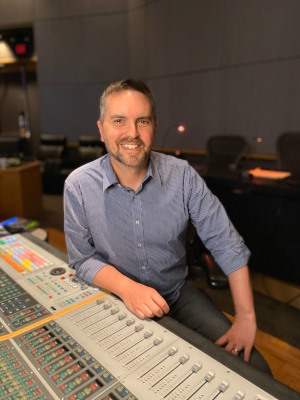
Set in 17th-century Japan, the show provides a delightful soundscape of natural sounds. But creating the sound of this place and time required strict attention to detail. Since the show was shot in Canada, supervising sound editor Brian Armstrong – at Warner Bros. Post Production Creative Services in Burbank – and his sound team needed to remove sounds native to the shooting location and replace them with more appropriate sounds of Japanese birds and bugs that even change with the seasons in the show.
They also needed nature-based domestic sounds like lacquered wooden sake cups, tatami mats, and tabi socks, and military sounds like samurai swords in wooden scabbards, black powder cannons, and leather-and-cloth horse tack that convey the simple yet refined nature of the Japanese culture of this era. The sound work is a reflection of that culture: articulate and restrained but not afraid to be brutal when necessary.
Here, Armstrong talks about creating immersive backgrounds using Japanese birds and bugs, rain, and melting snow. He talks about recording sounds from the location sets, like the shoji (doors) and show-specific props, how they handled the sounds of combat and what went into some battle scenes, and also how the Noh theater scene was constructed. He also talks about how much care and attention went into the dialogue, including the English dub version, and much more!
Shōgun – New Extended Trailer | FX
Shōgun is set in 17th-century Japan. How did you set the scene sonically?
Brian Armstrong (BA): We were very intentional and specific about how each location should sound. The coast near the fishing village of Ajiro is going to sound very different from the bustling city of Osaka, for example. We even tried to make the sound inside the walls of Osaka Castle isolating and prison-like which was very different from the rest of the city.
…Jim found scientific recordings of birds of Japan – a collection called ‘BIRD SOUNDS OF JAPAN,’ Wild Bird Society of Japan.
The keyword that everybody leaned on was “authenticity.” We wanted to make sure everything was appropriate and accurate. We weren’t taking any Western liberties, so to speak. Shōgun had two main sound designers, Ben Cook and Jim Gallivan, whose experiences lent themselves well to the sonic world. Ben, who has worked on many incredible shows such as Black Sails, brought a lot of experience with cannons and ships. I’ve worked with Jim a lot on The Walking Dead shows, so we have experience creating engaging worlds devoid of modern life/technology. As you can imagine, Jim has collected quite the gore library, which served as a strong base for building new elements for this show.
As far as trying to keep it authentic to Japan, Jim found scientific recordings of birds of Japan – a collection called “BIRD SOUNDS OF JAPAN,” Wild Bird Society of Japan. The metadata was all in Japanese, so after some extensive internet research, we found the translation. Jim renamed all the metadata and then dove into migration patterns and locations so the birds could help us track location as well as time of year.
Jim and I got in touch with sound designer Hide Aoki, who was nice enough to give us a lot of Japanese nature recordings. From those, we were able to hear the specific wildlife, like crickets and frogs, that we could then source from other libraries to match and make sure that it was all authentic.
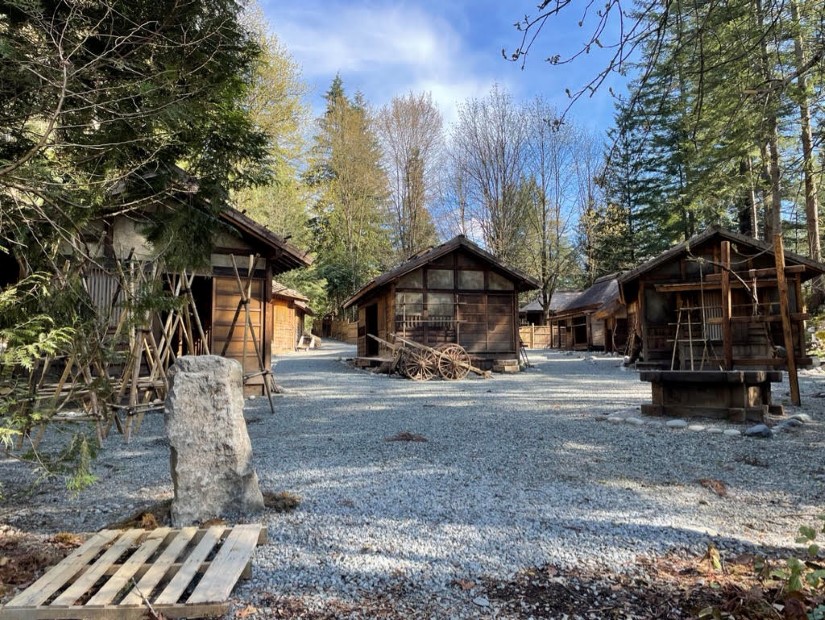
This was shot on location in Canada, so the natural sounds there aren’t what you’d find in Japan. Did you have to de-bird the dialogue tracks, or remove other nature sounds that didn’t fit the show’s setting?
BA: The biggest one was the Canadian geese that flew over in flocks; they sounded quite crazy. So yes, we did do some de-geese-ing from the dialogue tracks.
…we did do some de-geese-ing from the dialogue tracks.
There is a de-bird plugin we used with varying degrees of success, but most of the heavy lifting was done in iZotope, painting things out. Technology is really emerging now with these one-button noise reduction plugins. So we’ve been playing around with different ones. On Shōgun, we used a combination of Waves Clarity, Supertone Clear and, of course, iZotope.
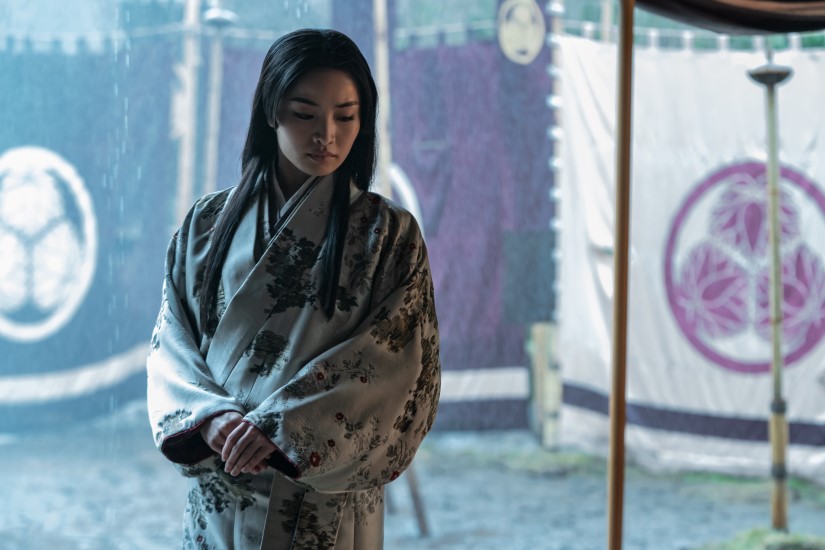
Some of the most common background sounds in the show are rain, fire, and horses. What were some of your sources for these sounds? Any helpful libraries?
BA: Fire and water were key elements for the backgrounds. For instance, there are a lot of braziers that we see, and we tried to be specific with the sound for those.
There is no shortage of rain in this show, especially towards the end of the season. Rain is one of those sounds that has so many libraries, so with some effort, you can eventually find the specific rain sounds for your needs, like the splattery rain with distinct drips that you see on the deck of Blackthorne’s house, or rain falling onto those thatched roofs, which has a really unique sound.
6 Sound Facts about Shōgun:
Q: Who did the sound design for Shōgun?
A: The sound was supervised by Brian Armstrong, who worked with sound designers Jim Gallivan and Ben Cook; additional nature sounds were provided by Hide Aoki.
Q: Who composed the music for Shōgun?
A: The music for Shōgun was composed by Atticus Ross, Leo Ross, and Nick Chuba.
Q: What was one important sound the team recorded on-set?
A: The shoji (doors) – sliding doors made of wood and paper often used in Japanese houses – were recorded on set. This is a sound not typically found in libraries.
Q: How did the team design the sounds of the samurai swords?
A: To make the samurai swords in Shōgun sound less shingy, the team focused on wooden sounds for the swords being sheathed and unsheathed. Additionally, re-recording mixer Greg Russell used EQ to tone down the metallic aspect of the swords, taming the high-end frequencies that gave a metallic feel.
Q: What’s the most surprising story behind the sound of Shōgun?
A: The show was shot in Canada, so sound supervisor Armstrong had to remove the sound of geese from the dialogue tracks as geese are native to Canada, but not Japan.
Q:What was the most challenging aspect of the sound on Shōgun?
A: The dialogue! Editing dialogue required the most time and attention to detail since dialogue editor John Creed doesn’t speak Japanese. Moreover, the show’s dialogue went through multiple levels of evaluation and re-writing, to make sure it was the best possible version of the language and subtitles. Edits to the dialogue and subtitles happened even on the dub stage.
Jim did some recordings of melting snow. He lives in Buffalo, so he has no shortage of snow.
Jim did some recordings of melting snow. He lives in Buffalo, so he has no shortage of snow. He did specific recordings for some of the establishing shots where you see the rain and snow dripping off those thatched roofs.
For the horses, having done so much work in The Walking Dead universe where horses are a major mode of transportation, we had lots of libraries to pull from, like Surround Sound LAB Raw Horses library, BOOM Library Horses, and Thomas Rex Beverly’s Neigh library of Icelandic horses. We used those for the distant horse whinnies peppered into the backgrounds and for the close-up horses that our principals ride.
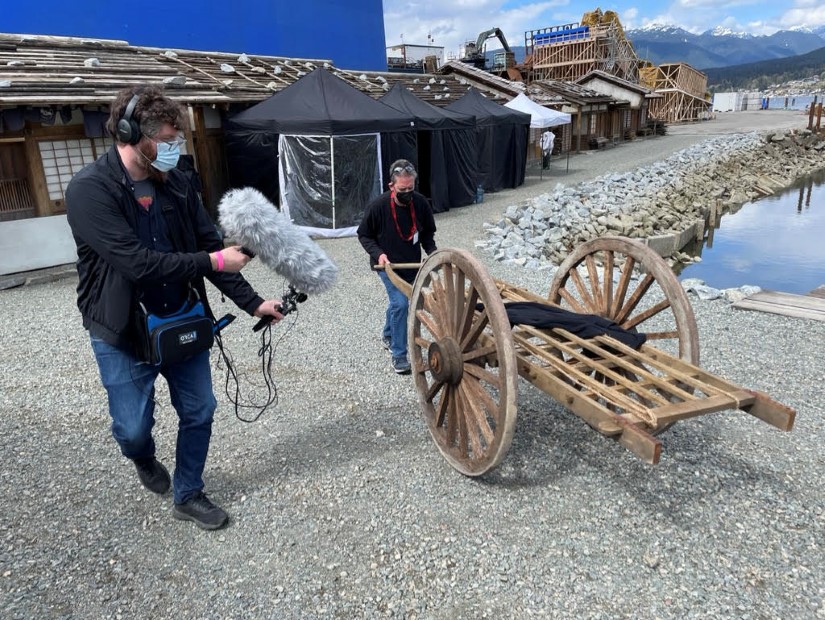
Did you do any field recording for the show? If so, where did you go and what did you record?
BA: We did visit the set and were able to record a lot of different versions of the shoji, which are the sliding doors in Japan. The set was absolutely incredible. Much like the rest of the production design (costumes, hair, makeup, etc.) extra efforts were made for the sets to be period-accurate as well. It was beyond impressive to see all of that and it inspired us to ensure the same care and respect was taken with the overall sound design.
All the doors you hear were recorded on set – from different weights to speeds to clunks – all of that was very much from set.
‘Shogun’ supervising sound editor Brian J. Armstrong on finding authenticity of 17th century Japan
A lot of other recordings we got were just background, knock-about sounds like old creaky carts that were going across gravel and bamboo poles that we could use randomly in the backgrounds to give a sense of activity.
It was really cool to just walk around on-set when they weren’t filming. We were allowed to record whatever we could and wanted. Special shout out to Don Brown (boom operator) for hosting us and getting us into all the locations!
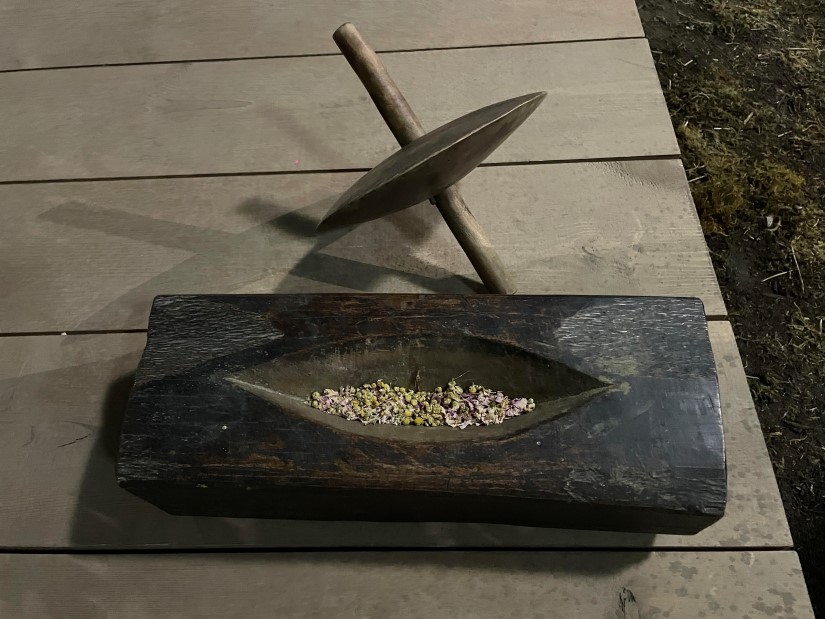
Another element we recorded on set was the spice grinder that’s in Ep. 6, in Ochiba’s flashback design. We used that element quite a bit.
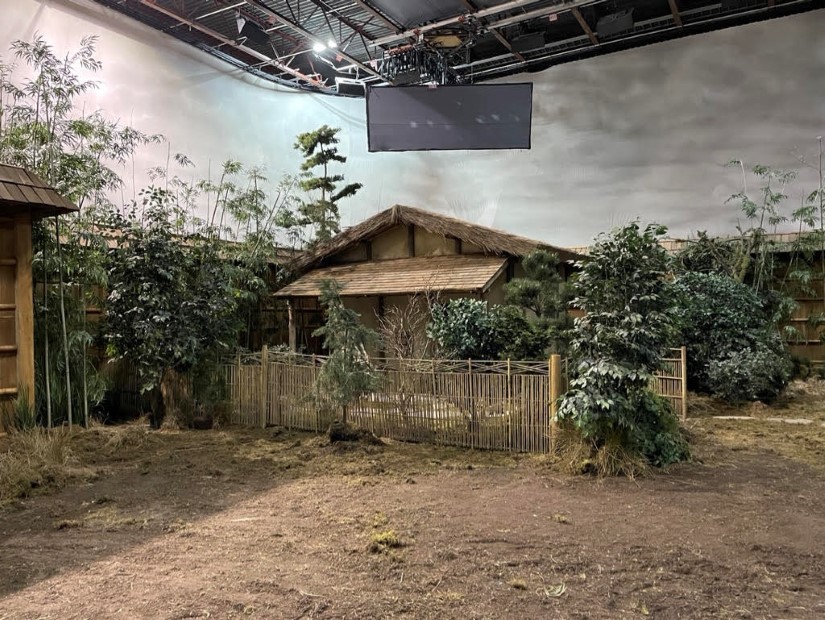
Oftentimes, sets will impart a hollow, reverby sound that isn’t ideal for the production dialogue, but in this case, it was probably appropriate since the “houses are built to go up as quickly as they come down”, as they say in the show. Did you capture any IRs on location to help with ADR?
BA: We wanted to but there was a lot of buzzing and tones from the stage lights on-set. As much as we wanted to turn off all the lights to record IRs, we couldn’t. Even though no filming was happening, crews were busy and needed the lights to see; they were literally putting leaves on trees!
So we weren’t able to record IRs, but re-recording mixer Steve Pederson (who mixed music and dialogue) has such an incredible taste for reverbs and always has some light room present on the tracks giving them life, which also helps the ADR blend in beautifully.
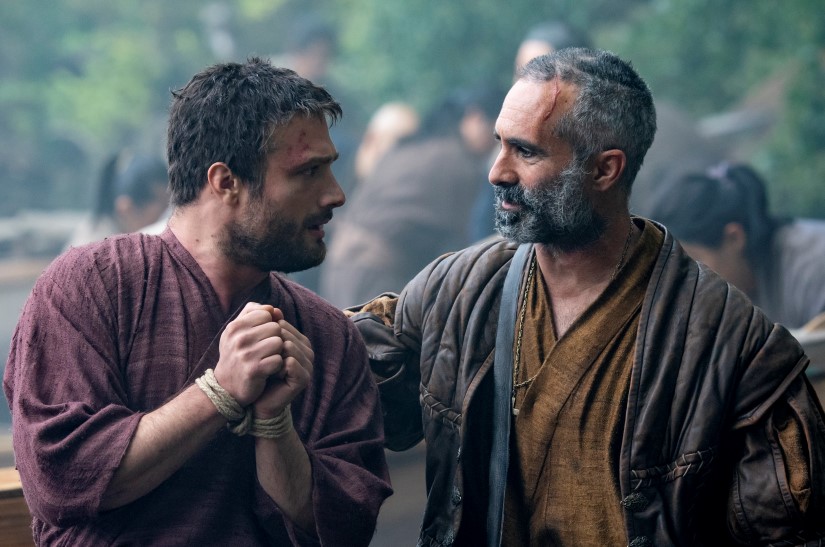
Dialogue is a key component of Shōgun‘s sound. Can you talk about what went into the dialogue?
BA: Overall, it was daunting at first because I don’t speak Japanese. The dialogue editor I work with, John Creed, also doesn’t speak Japanese. It’s funny because even if we did (which definitely would have been helpful) this dialogue is so specific to the period so there are a lot of nuances that require very trained ears.
Michael Williamson did a great job with the production recordings themselves. The lavs had a really great range on them. The boom was nice and tight (when the setups allowed).
…the scene in the pilot episode on the ship, when they go into the storm, we used all the production dialogue for Blackthorne.
The on-set sound team did a great job with what they were handed. For instance, the scene in the pilot episode on the ship, when they go into the storm, we used all the production dialogue for Blackthorne. All of that is directly from set, cleaned up. The only reason we ADR’d Rodrigues was for clarity. Because of Rodrigues’s accent and the period-specific dialogue, we wanted to give the audience as much help as we could.
The dialogue is just so fun, which was a bit unexpected. When we first get to Japan, everything is very proper. As a Western audience member watching it for the first time, I was sitting up a little bit straighter, just getting ready for super well-mannered character dialogue, and then the first line out of Hiromatsu’s mouth is, “Osaka has turned into a real shit hole.”
And I’m like, “Oh, okay! We’re gonna have fun with this!”
…once we had gone through our technical edit, Ayako Yamauchi (Group ADR Editor and Japanese DX editorial consultant) came on board to help us with a final pass on the dialogue.
John definitely had his work cut out for him as far as cleanup goes because the dialogue was so specific. There were many times when we would receive lines that were just cheated into place; the sync wasn’t great. It was our job to fix the sync, obviously, but also to figure out what they were trying to replace – what syllable or what emphasis they were trying to fix – to try to honor as much of the original performance as possible, and only sub out the very specific thing that they were looking for.
That was probably 50% to 60% of the ADR, but it’s not just about emphasis and extra syllables here and there. It’s also about the delivery between characters. So if one samurai is speaking to another samurai, they could say the same words but it’s going to be different if they’re speaking to a villager versus if they’re speaking to Toranaga or any of the other Lords.
We were definitely kept on our toes. As an extra safety line, once we had gone through our technical edit, Ayako Yamauchi (Group ADR Editor and Japanese DX editorial consultant) came on board to help us with a final pass on the dialogue. We watched it down again, and she’d point out any lines that were a little mushy-mouthed, unintentionally stuttered, etc. We’d swap those out with alts to make sure the dialogue was as clear and intentional as it could be.
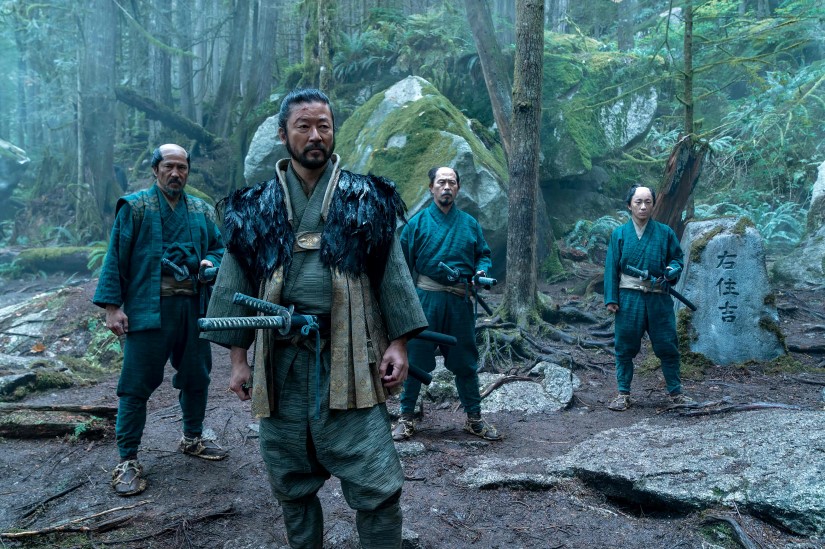
I don’t speak Japanese either, but you can tell if someone’s mouth isn’t really matching what they’re saying. And I didn’t notice any instances of that. The dialogue sync felt tight and the tracks sounded super clean. Nothing is distracting the listener from the performances, be it production or ADR…
BA: That’s always the goal. I feel like in this project, we hit all of that harder than we typically do just because not only did we want to honor the absolutely incredible performances but also not rely on subtitles as a crutch. That was very important from the get-go. If a line was a little hard to understand, we worked hard to get it right so that if we took the subtitles away, it all still plays perfectly.
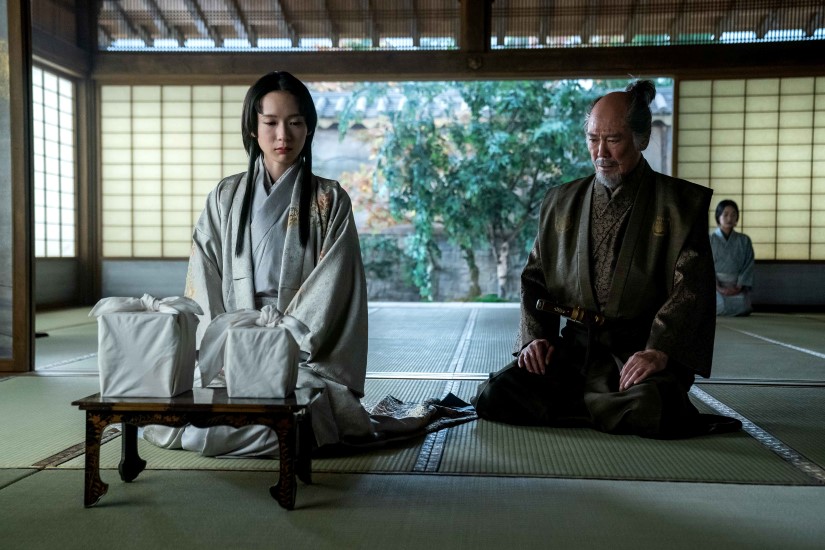
What about the English dub version? I watched Ep. 6 in the ‘English dub’ and was pleasantly surprised! Sure, it didn’t fit perfectly but it also didn’t sound pasted on as an afterthought. Was that handled by your team, or by an outside studio that handles localization?
BA: It was a bit of a hybrid. Once it was decided that they were going to do it, Disney’s localization team (led by Oscar Garcia) cast and shot it all. They sent us the raw sessions with the selects chosen. We cleaned up the selects, auto-aligned them, and got them all prepared for the stage.
We had a different mix team for that (Alex Gruzdev), but we did mix it using stems from the original. Anytime we could, we went back to the original dialogue stem for breaths, grunts, and that kind of stuff.
Anytime we could, we went back to the original dialogue stem for breaths, grunts, and that kind of stuff.
We were given two days on the mix stage to really get in there and do a great EQ match. So, if you flip back and forth between them, sonically, they’re pretty much exact. I think that’s a level of attention that not a lot of localization dubs get. The care that has gone into this from A to Z has been impeccable.
We were pleased to be able to work on the English dub because that was our fear too. When we were watching it in our room with just the raw tracks from the studio, we’re like, “What is happening???” After being immersed in the Japanese language for almost two years, we were concerned about how the English dub was playing. But then we did the EQ match and put it in the space and mixed it properly, and now it does work.
Hear Atticus Ross, Leo Ross, and Nick Chuba’s soundtrack for Shōgun above
…even in post-production when we were on the stage, we’d change a word in the subtitle or grab some ADR because a line really should have been saying this or that.
It’s funny, my dad watches the original and then goes back and watches the English dub. So he watches each episode twice (at least twice) just to really make sure he’s getting everything. So even if that’s the only reason, I’m really glad we had a part in that so we can help ensure the quality extends across both versions.
Another thing to mention about the original dialogue is that it went through many stages. (You can hear more about this in the official Shōgun podcast). It was written originally in English and then it was translated to Japanese and handed to a Japanese playwright who then added more poetic touches and period-appropriateness to it. Then it was translated back to English for the subtitles. From there, even in post-production when we were on the stage, we’d change a word in the subtitle or grab some ADR because a line really should have been saying this or that.
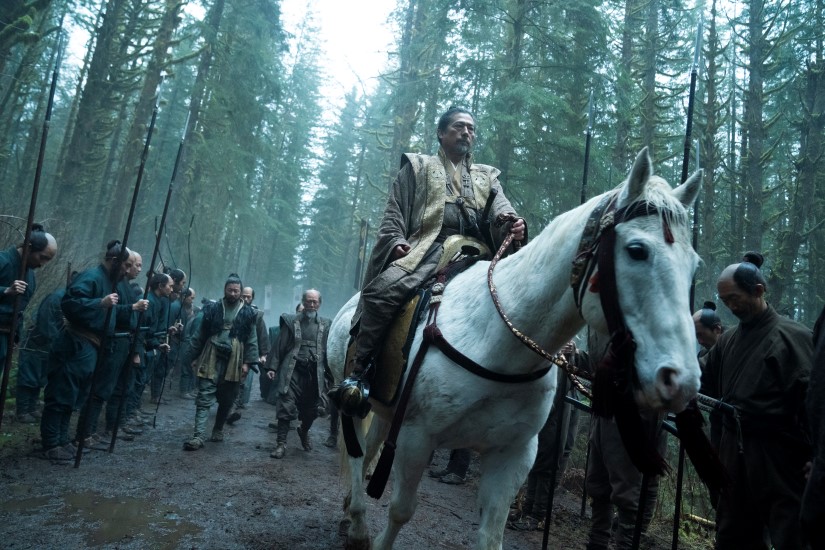
Can you talk about your approach to the sounds of conflict? You mentioned Ben Cook’s work on the cannons and ships. The cannons in Ep. 4 were fun! They used them to attack the warriors and horses…
BA: They turned some of the samurai into jello!
For the cannons specifically, Ben used some 5.1 builds he created for ‘Black Sails’…
That was a lot of fun because this was one of the rare moments in the show when we were allowed to be bigger than life and take some “Hollywood” liberties. That chain shot moment was definitely one of them. It’s not a regular cannonball that gets fired and hits the ground, explodes, or goes through someone. It’s two cannonballs attached by a chain, so it does an insane amount of damage with far less need for accuracy. Being able to add this metallic, howling, otherworldly element to that chain shot was brilliant. That was really cool and really fun. It adds a unique flavor to that visceral moment. For the cannons specifically, Ben used some 5.1 builds he created for Black Sails along with sweeteners from libraries such as BOOM’s microlibrary Black Powder.
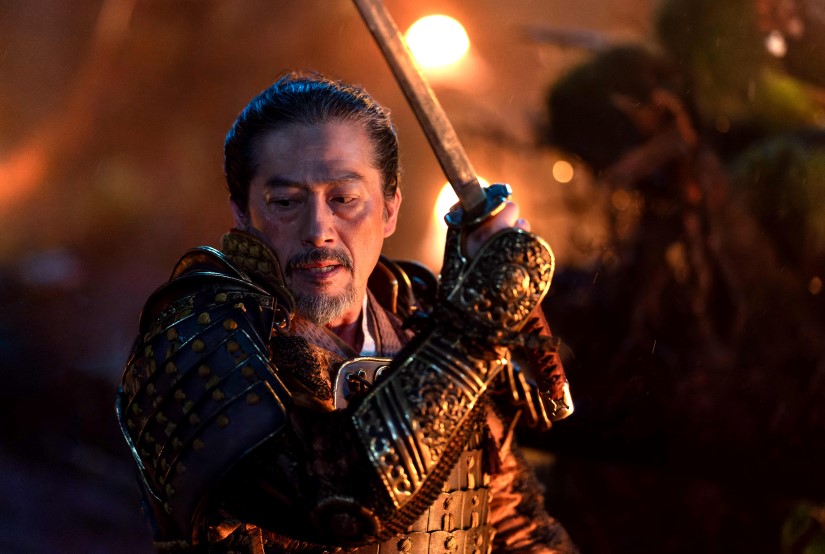
There was an awesome night ambush in Ep. 3 with flame arrows that had fun spatialization! Can you talk about the sound work on those?
BA: That was another moment when we just went for it. One of the things that Justin Marks (showrunner/co-creator) talked about was making this moment a benchmark for future shows, to one day have someone say, “I want this to sound like that moment in Shōgun when those flaming arrows are coming through the air.” We wanted to set that benchmark. It sounds super egocentric when I say it out loud now, but if we can’t do it to a show of this stature, where can we do something like that?
There are quite a few layers to each individual arrow, and to the ones that are raining down.
Jim really worked hard on getting those flaming arrows to feel new and threatening. There are quite a few layers to each individual arrow, and to the ones that are raining down. We ran elements through Sound Particles to add movement and variation. It has a lot of life and threat to it, which is really cool.
Also, having re-recording mixer Greg Russell sitting at the console mixing effects does not hurt at all. To have somebody like Greg confirm that it sounds cool, we know we’ve done our jobs well. Greg Russell approves, that’s all I need. I can retire now.
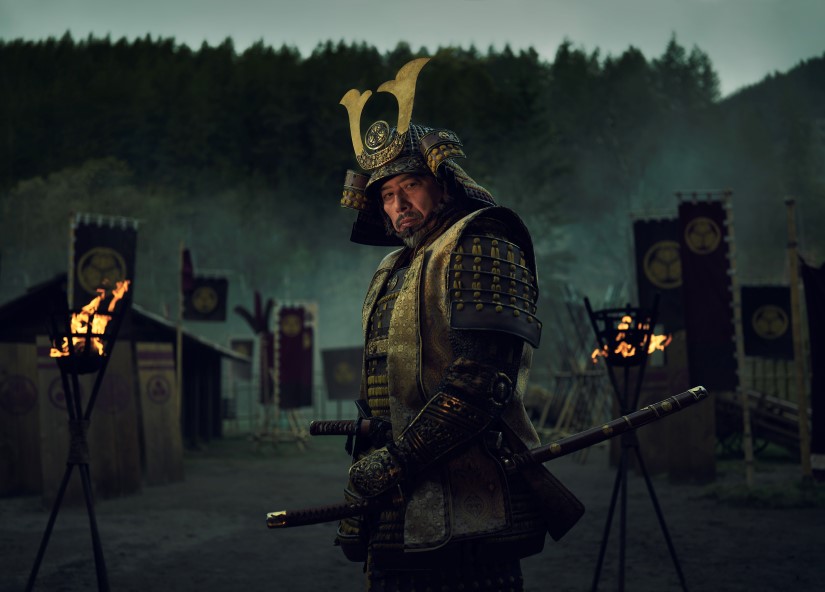
What about the sound of the swords? What was your approach to those?
BA: Hiroyuki Sanada (who plays Yoshii Toranaga and is also a producer on the show) was super involved with a lot of the post-production process. He constantly reminded us to use less metal. During one of the playbacks, he said, “The katanas don’t make sound. Watch.” He gets up, walks out of frame on the Zoom call, and comes back with his own personal samurai sword. He’s sheathing and unsheathing it, saying, “See, no sound.”
…we worked hard to give it more of a wooden sound when the swords were being sheathed and unsheathed.
But we had to have something for the swords. So we worked hard to give it more of a wooden sound when the swords were being sheathed and unsheathed. And during combat, because much of the armor was lacquered wood, essentially, and not metal, we tried to tone it down and not make it as “Hollywood” as our tendencies may have wanted to go. Greg used a lot of EQ to help tame high-end frequencies that gave a metallic feel. The end result is more organic. And we try to ground ourselves on any show we work on but this show especially called our attention to that.
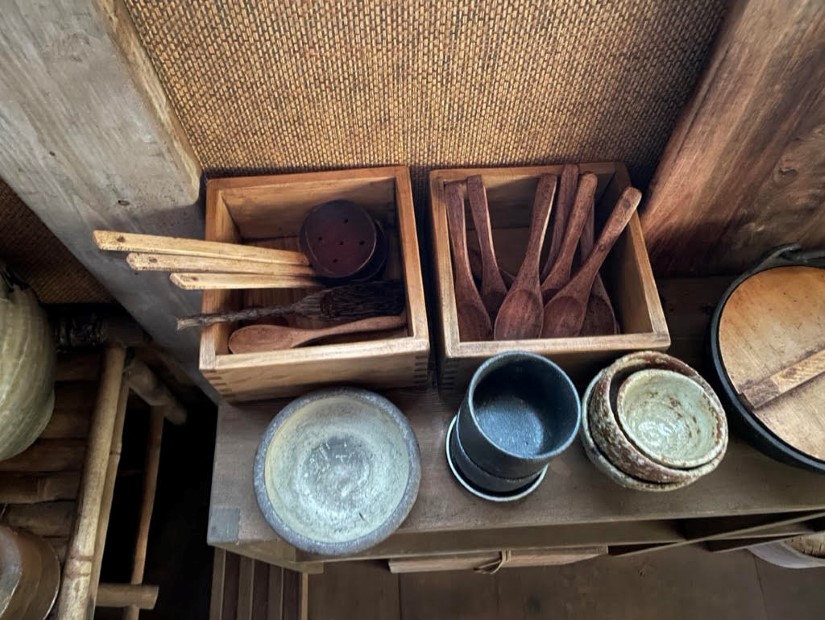
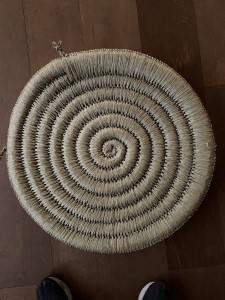
Did foley help with those sword sounds? (I loved the foley in this show!)
BA: Foley was such a big part of the show. Foley artist Sanaa Kelley, founder of Reel Foley Sound, got a bunch of authentic props, like the tatami mats, the tabi socks, and different kits for the horses’ tack. Typically in Western shows, you have a spurs-ching kind of sound but we wanted to ground it more in leather and more organic materials. So we worked closely with Sanaa to get three or four different options of horse gear movement. We were able to pick the leathery part of one kit and the creaky part from another, and combined those together to get the sound we wanted.
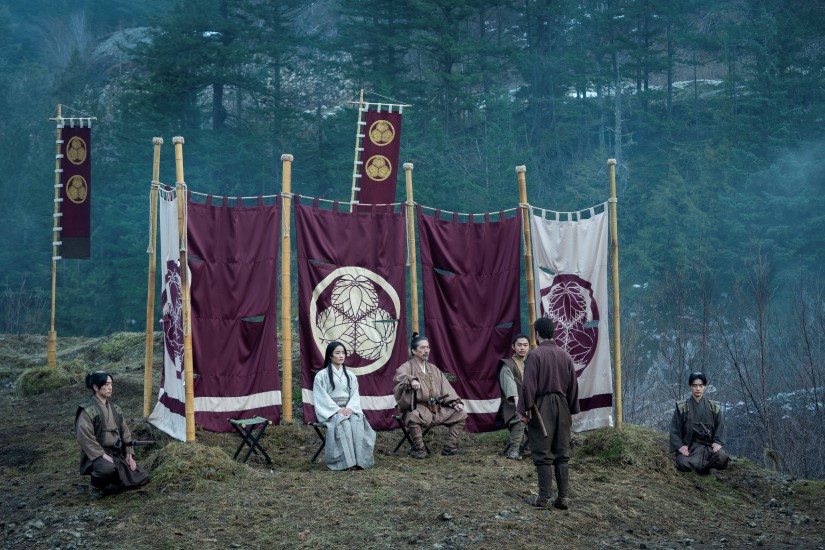
Can you talk about creating the sound of the massive earthquake in Ep. 5? How did you help to sell the danger of that moment through sound, and get that to come across on a small screen?
BA: So much of it came down to the specificity of it. You’ve got the rumble as a glue but we tried not to rely just on that rumble. It’s a scary sound, but sometimes in a real earthquake, you don’t hear anything; you’re just feeling it. So the emphasis can be on the things moving around you that aren’t supposed to be moving (rocks rattling, trees falling over, etc.)
It was one of those moments where great sound design and incredible visuals came together and it works so well.
When we first received that sequence, the VFX were nowhere near final. We built a bunch of elements for it and then didn’t get to see the final visuals until much later in the mix. It was a jaw-dropping moment watching them together for the first time. I knew it was going to look cool but had no idea it was going to look as cool as it does. It was one of those moments where great sound design and incredible visuals came together and it works so well. We did add a few last-minute sounds for specific VFX that weren’t there initially, but the overall design was very consistent from the beginning.
There are a lot of trees snapping and breaking and foliage movement that initiates a lot of the bigger movements you see. Some helpful libraries for that were The Recordist “Ultimate Wood SFX Library,” and Soundmorph Rupture.
For me, the specificity of it is really what nails it down. From the loop group tracks to the way the actors are dancing around through it all, it’s one of those things that just all comes together in such a beautiful way. That sequence is one of the coolest audio moments that I’ve done in my limited career.
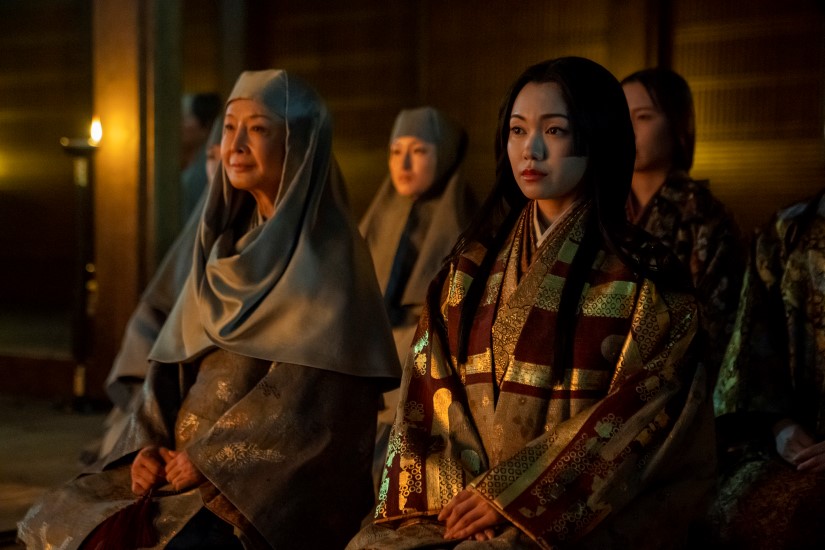
So far, what are you most pleased with in terms of sound for the show?
BA: Overall, I just love the specificity of everything. Everything has a pocket that it sits in and nothing is really competing for space anywhere. The dialogue sounds incredible. At one point, I was going through the effects and the dialogue together before I sent it to the stage (so I can make little adjustments) and there was a shoji in Ep. 2 or Ep. 3 that sounded neat. So I muted the dialogue to just hear the door and about 5 minutes later I realized that I had never turned the dialogue back on. I was just so engrossed with the backgrounds; they were super immersive.
The vocals and music were recorded with Noh musicians in Tokyo and were played on set during shooting.
Everything has a place and it all just works so beautifully. There’s a lot of tendency to just fill in everything everywhere but we really used restraint on this show, to build a specific and deliberate soundtrack. Also, the music composed by Atticus Ross, Leo Ross, and Nick Chuba compliments the show so well. Their compositions often blur the lines between sound design and music, so music and sound worked closely with one another to make sure we were always complimenting and not competing.
In terms of specific moments, I really love the earthquake. The chain shot ripping people apart is pretty cool. But I think Ep. 6 might be my favorite episode. There’s not a lot of action. It’s very character-driven. We get to see the horror of what Ochiba has gone through. And her flashback is just such a cool sequence to me, sonically.
We received the stems to re-mix and layered them with the foley, effects, dialogue, etc. to make it feel live.
There’s also the Noh theater scene which has these incredibly unique vocals. The piece of theater featured in Ep. 6 is composed and choreographed specifically for Shōgun by Noh Master Kazufusa Hosho of Hosho-Ryu. The vocals and music were recorded with Noh musicians in Tokyo and were played on set during shooting. We received the stems to re-mix and layered them with the foley, effects, dialogue, etc. to make it feel live. It’s very convincing.
Overall, Shōgun’s soundtrack keeps you on your toes. It keeps your ears interested the whole time. I’m just so incredibly proud of the work that our whole team has done.
A big thanks to Brian Armstrong for giving us a behind-the-scenes look at the sound of Shōgun and to Jennifer Walden for the interview!

